
GRAMMR AND VOCABULARY FINAL TEST
GRAMMAR AND vOCABULARY WORDS AND DEFINITIONS
Level: elementary
Age: 7-100
Type:
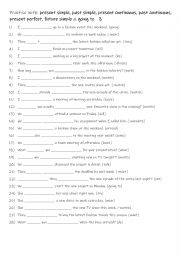
A2-B1 Practise with present simple, past simple, present continuous, past continuous, present perfect, future simple & going to 3
Practising these tenses allows students to speak confidently about everyday situations, past events, future plans, and hypothetical scenarios. It improves their ability to communicate with precision, enhances fluency, and prepares them for more advanced grammar. Mastery of these structures supports clearer expression of ideas and better understandi...
Level: elementary
Age: 8-100
Type: worksheet

A2+-B1 Practise with present simple, present continuous, past simple, past continuous, present perfect, present perfect continuous & future perfect 2
Learning key tenses such as the present simple, present continuous, past simple, past continuous, present perfect simple, and present perfect continuous enables students to communicate clearly by expressing actions and events with accuracy. These tenses cover a wide range of contexts, from daily routines and ongoing activities to completed actions ...
Level: elementary
Age: 8-100
Type:

A2+-B1 Practise with past simple, past continuous, present perfect, present perfect continuous, past perfect & used to 4
Practising these tenses helps students express different aspects of time and actions effectively. The past simple is vital for describing completed actions, while the past continuous sets scenes or shows interruptions in the past. The present perfect connects past actions to the present, and the present perfect continuous highlights ongoing or repe...
Level: elementary
Age: 8-100
Type:
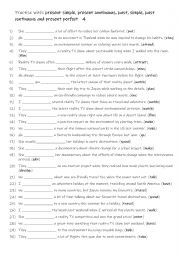
A2-B1 Practise with present simple, present continuous, past, simple, past continuous and present perfect 4
Students at A2-B1 level should practise the present simple, present continuous, past simple, past continuous, and present perfect tenses as they form the foundation of clear and effective communication. These tenses enable learners to discuss routines, habits, and facts, describe ongoing actions, recount past events, and share experiences or achiev...
Level: elementary
Age: 8-100
Type:

They changed the world = Edison and Ford
An introduction to the past perfect simple through real inventors�stories.
Level: intermediate
Age: 13-17
Type:

A2+-B1 Practise with present simple, past simple, present perfect, present continuous, future simple & going to 4
First, students need to familiarise themselves with the tenses and use. Then they read the sentences to work out which one is needed to complete the gap-fill using the infinitive in (). Each tense is used 3 times! Answers on page 2
Level: elementary
Age: 7-100
Type: worksheet

Practise with: present simple, present continuous, past, simple, past continuous and present perfect 3
First, students need to familiarise themselves with the 5 tenses and their use. Then they read the sentences to see which one is needed to complete the sentence using the given infinitive in (). Each tense is used 6 times! Answers on page 2.
Level: elementary
Age: 8-100
Type: worksheet
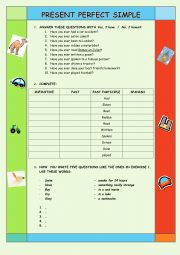
Introducing Present Perfect Simple
Introducing Present Perfect and interacting with your classmates.
Level: elementary
Age: 11-16
Type:

A1+ A2 Practise with past simple, past continuous & present perfect 6
First, students need to familiarise themselves with the 3 tenses and their use. Then they read the sentences to work out which one is needed to complete the gap-fill using the given verb in (). Each tense is used 9 times! Answers on page 2
Level: elementary
Age: 7-100
Type:

A1+ A2 Practise with past simple, past continuous & present perfect 5
First, students need to familiarise themselves with the 3 tenses and their use. Then they read the sentences to work out which one is needed to complete the gap-fill using the given verb in (). Each tense is used 9 times! Answers on page 2
Level: elementary
Age: 7-100
Type:

A2-B1 Complete using either the past perfect or past perfect continuous 3
First, students need to familiarise themselves with the 2 tenses and their use. Then they read the sentences to see which tense is needed to complete the sentence. Each tense is used 10 times! Answers on page 2.
Level: elementary
Age: 10-100
Type:
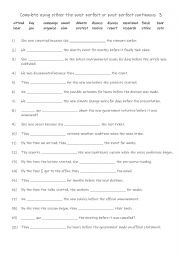
Complete using either the past perfect or past perfect continuous 3
First, students need to familiarise themselves with the 2 tenses and their use. Then they read the sentences to see which tense is needed to complete the sentence. Each tense is used 10 times! Answers on page 2.
Level: elementary
Age: 9-100
Type:

Past Perfect Test A B
Level: intermediate
Age: 10-100
Type:
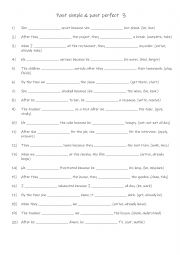
Past simple & past perfect 3
Learning the past simple and past perfect tenses is crucial for students as it helps them communicate clearly about past events, showing when actions occurred and how they relate to one another in time. Mastering these tenses improves storytelling, writing, and speaking, enabling students to convey events in a logical and nuanced way. Additionally,...
Level: elementary
Age: 9-100
Type:
|

the past perfect tense
a short and efficient way of present the past perfect tense using easy situations and clear examples
I hope it will help you.
Level: intermediate
Age: 10-100
Format: PowerPoint

Past Perfect Presentation
Hi there! I used this presentation to help my students understand how to use PAST PERFECT.
It went really well and it was quite useful.
Level: intermediate
Age: 14-100
Format: PowerPoint
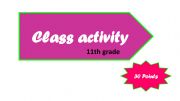
Class activity , PRESENT PERFECT VS PAST SIMPLE
A very good activity to reinforce and apply PAST SIMPLE VS PRESENT PERFECT STRUCTURE....
Level: intermediate
Age: 12-100
Format: PowerPoint
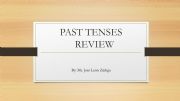
Past Tenses review
Level: intermediate
Age: 11-100
Format: PowerPoint
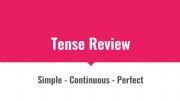
Tense Review
This is a quick review explaining how to form and the uses of the tenses in Engliah. Hope you�ll find it useful.
Level: intermediate
Age: 10-100
Format: PowerPoint

REPORTED SPEECH
This is going to help learners to understand how reported speech works. This presentation has examples, structures,and elements for the understanding of the learners.
Level: intermediate
Age: 6-100
Format: PowerPoint

PRESENT PERFECT VS PAST SIMPLE
A grammar guide about the differences between the present perfect and the simple past, with a practice exercise.
Level: intermediate
Age: 15-100
Format: PowerPoint
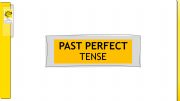
past perfect
past perfect
Level: intermediate
Age: 10-16
Format: PowerPoint
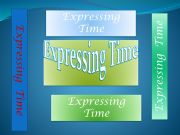
time expression with past simple and perfect
this PowerPoint shows the use of time markers to link two actions in the past.
Level: intermediate
Age: 15-17
Format: PowerPoint
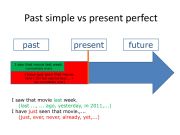
Past simple vs present perfect
visual representation past simple vs present perfect
Level: intermediate
Age: 14-17
Format: PowerPoint

Present Perfect
Use this PPT to explain and practice the Present Perfect.
Level: elementary
Age: 11-100
Format: PowerPoint

Past perfect continuous
This one-pager gives an overview of the past perfect continuous tense with details on usage, examples and rules for building in affirmative, negative and interrogative including contractions.
I have uploaded similar documents for other tenses.
Level: intermediate
Age: 10-100
Format: PowerPoint
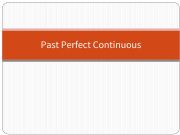
Past Perfect Continuous
A powerpoint to explain the past perfect continuous
Level: intermediate
Age: 12-100
Format: PowerPoint

Past perfect
This one page document describes how to use the past perfect tense, how to construct in affirmative, negative and interrogative including with contractions.
I have other similar documents on this site for other tenses.
Level: intermediate
Age: 10-100
Format: PowerPoint
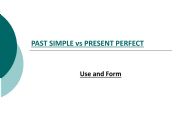
Past Simple vs Present Perfect
Students can learn how to form and use The Past Simple and the Present perfect. They can also practise both verb tenses.
Level: intermediate
Age: 13-17
Format: PowerPoint
|
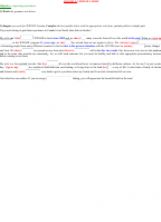
Expressing experiences
After watching a grammar tuto from VOA, students have to complete a host profile with the appropriate verb form.
Level: intermediate
Age: 14-100
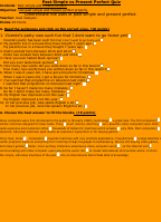
Past simple vs present perfect
past simple vs present perfect eactivities
Level: elementary
Age: 10-100

present perfect, past simple
children throw the dice and open the brackets
Level: intermediate
Age: 11-14

The Raising of Lazarus (Irregular Verbs and Mixed Tenses)
This text is taken from The�Gospel of John 11:1-45 (King James version). It describes the Raising of Lazarus. It is one of the most important events before Easter.
The text contains a lot of Irregular verbs. Besides Past tenses are presented there quite well.
The text is religious (Christianity) so keep it in mind.
Level: intermediate
Age: 11-100
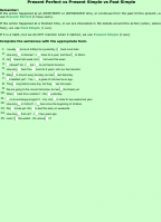
Present Perfect vs Present Simple vs Past Simple
This worksheet practises the contrast between the present perfect and the present and past simple.
Level: intermediate
Age: 10-100
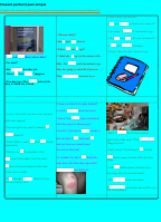
Present perfect past simple
The students complete the sentences with the given verb in oast simple or present perfect.
Level: elementary
Age: 12-14
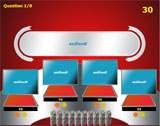
Past tenses and Present Perfect advanced
Designed with a CAE/Cambridge Advanced class in mind (Complete Advanced coursebook), this game is supposed to help revise past tenses and Present Perfect in a fun way. Hope pictures draw the attention, too ;-) enjoy
Level: advanced
Age: 14-100

past perfect, past simple, present perfect or past continuous
Enjoy it.
Level: elementary
Age: 10-100
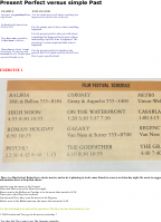
Simple past versus present perfect
exercise
Level: intermediate
Age: 14-100
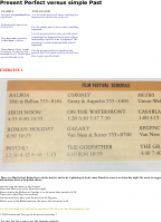
Present perfect versus Simple Past
There you have some explanations and some exercises.
Level: intermediate
Age: 14-100
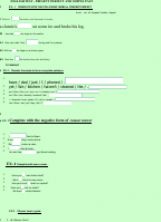
Present Perfect, simple past test
This a test for my students at half term year. Complete sentences using the verb at present perfect. Use the negative form. Use ever, never. Use since or for. Use been or gone.
Level: intermediate
Age: 12-100
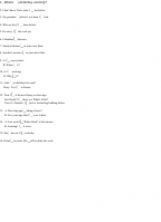
present perfect vs. simple past
Enjoy it!
Level: elementary
Age: 12-100
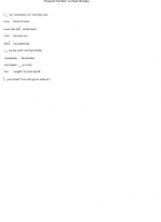
Present Perfect vs Past Simple
Present Perfect vs Past Simple
Level: elementary
Age: 7-9

All tenses game
A test of verb tenses. Present Simple and Continuous, Past Simple and Continuous, Present Perfect, Past Perfect, Future Will, Be going to
Level: intermediate
Age: 12-100
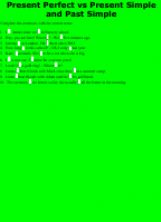
Present perfect vs present simple and past simple
The students practise the contrast between these tenses
Level: intermediate
Age: 10-100
|